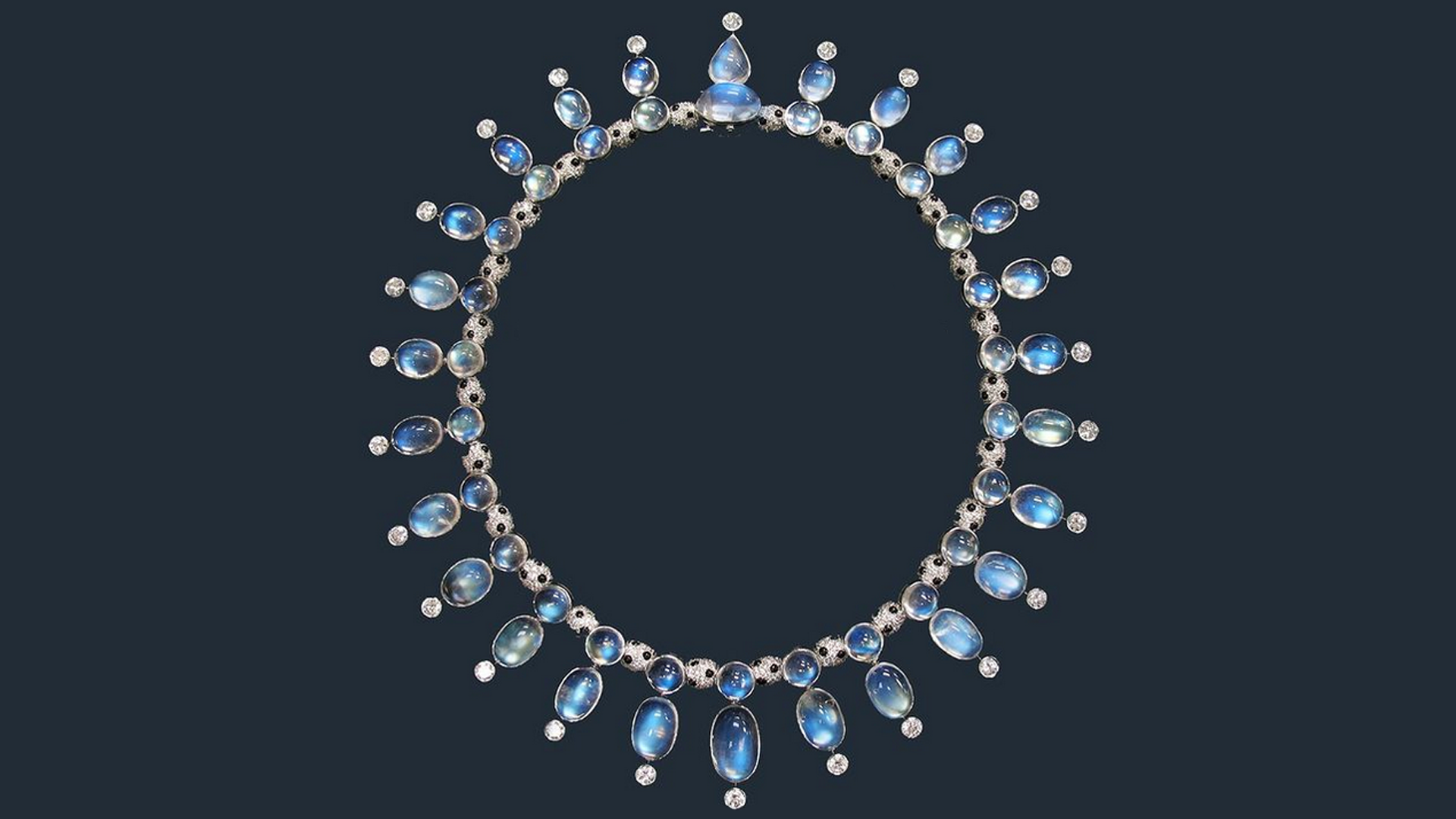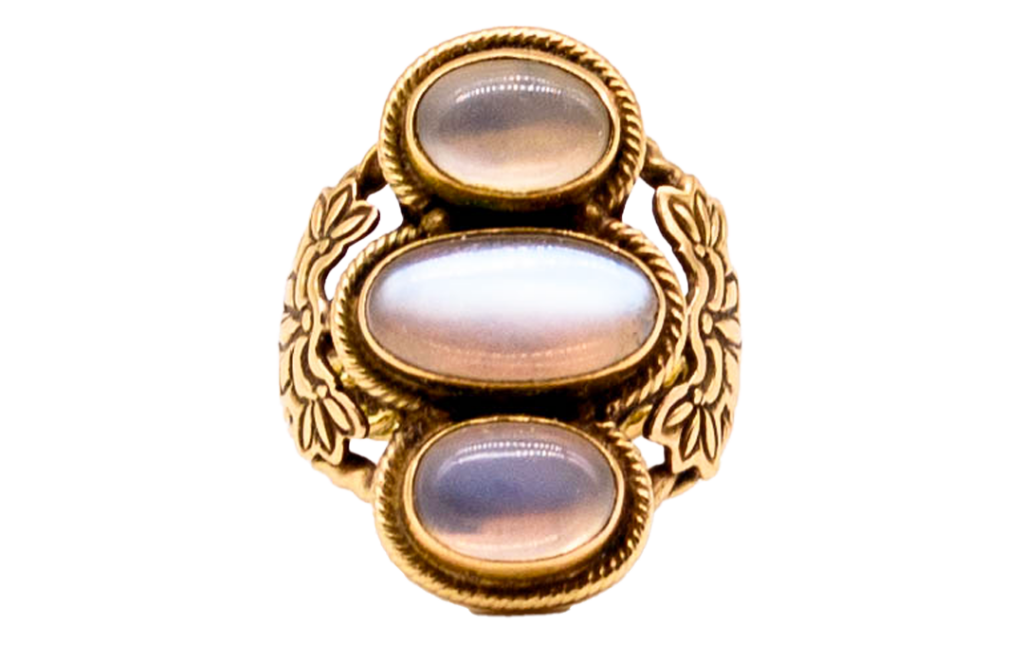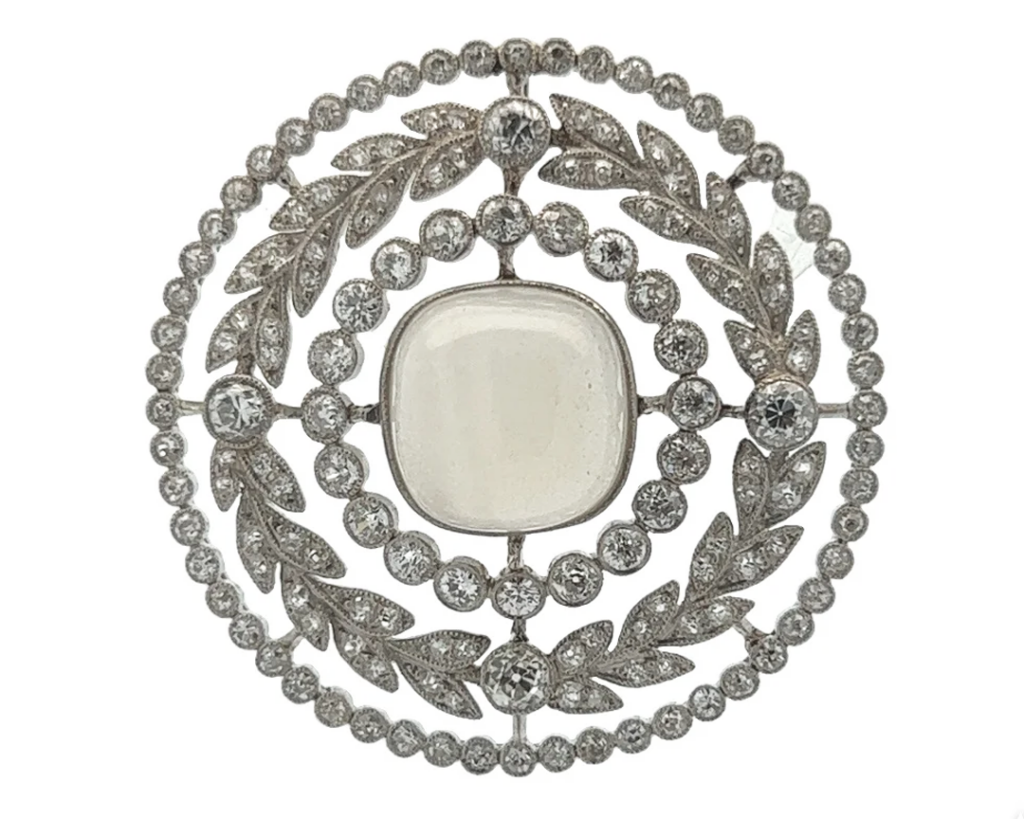Etheric and magical moonstone captures our imagination with its shifting light and connection to the moon. Commonly used in late Victorian, Art Nouveau and Edwardian jewelry, moonstone adds a captivating sheen to a jewel that is both mysterious and alluring.
Moonstone has been around since the days of the ancient Romans, who believed that the moon goddess, Diana, could be seen inside the gem. In India, the Hindu tradition says that moonstone is made from solidified moonbeams.
What is Adularescence?

So how is it that moonstone has such a strong heavenly connection? That association comes from moonstone’s special optical effect known as adularescence. To understand what this difficult to pronounce word means, we need to take a look at the internal structure of the moonstone. A part of the feldspar family, it is comprised of super thin layers of orthoclase and albite minerals, which alternate throughout the stone. When light hits the stone and falls between the layers, the light is scattered creating adularescence, the mystical color that floats across the stone like the full moon on a misty night. The highest quality moonstones have a blue sheen that flows across a colorless background, but that sheen may also be silver, white or rainbow. The best way to see this optical effect is to find some natural daylight and then gently tilt the stone from side to side. As the shifting light hits the stone, it will delight you with a display of adularescence.
Moonstones can be found in white, peach, green and brown as well as gray and are believed to bring good luck to anyone who owns the gem. This gem, which is known as a “phenomenal gemstone” due to its special optical effects, is almost always turned into a cabochon as it is the best way to bring out the adularescence that makes moonstone so special.
Moonstone in Vintage Jewelry
You’ll frequently find moonstone in jewelry from the late Victorian era, as well as the Edwardian era and in Art Nouveau pieces. In Victorian jewelry moon and star motifs were very important and moonstone was sometimes found in these pieces. The Edwardians favored moonstone because it looked lovely in electric light and it was on trend with the white-on-white look — platinum, diamonds and pearls — that was so important in that era. Moonstone also harmonized with the lighter color and texture fabrics that became popular during that time.
During the late Victorian years and through the Edwardian years, the Art Nouveau movement was underway. In this design oriented movement, materials in jewelry were used to add to the beauty of the piece rather than for their monetary value or flashiness. Gems were also used for their symbolism. Art Nouveau jewelry celebrated nature and the female form and with its connection to the moon and the divine feminine, moonstone was the perfect symbolic gem for Art Nouveau jewels.
Moonstone Brings Sweet Dreams

This June birthstone is found in a number of places including the United States, India, Sri Lanka, Brazil and Madagascar. One of the first sources of high quality moonstone was in Switzerland near Mt. Adular, in a town now known as St. Gotthard. Measuring 6 to 6.5 on the Mohs Scale of gemstone hardness, moonstone needs to be handled somewhat carefully as it can break or chip when set in a ring. However the proper ring design will protect the stone. Moonstone is also very sensitive to heat and may crack if it gets too hot. When cleaning a moonstone simply use warm water and mild soap then dry your jewel with a soft cloth. Ultrasonic cleaners or other commercial processes should be avoided as they can damage the stone.
On a final note, moonstone is also associated with night. It is sometimes referred to as a travelers stone and is said that wearing it protects people who are travelling at night. If you want to have a little fun with your moonstone, consider sleeping with it under your pillow or next to your bed, legend has it that this gem will ensure serenity and sweet dreams while you sleep.
Authored by Amber Michelle


